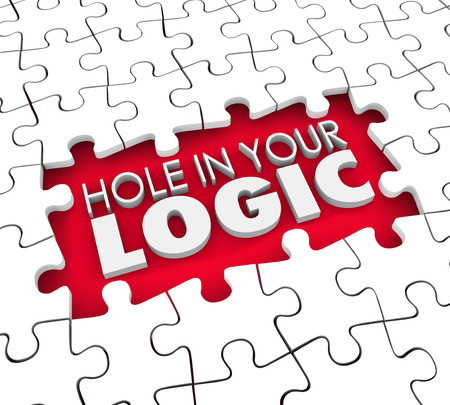 In his 2018 State of the Union speech, President Trump placed reducing the price of prescription drugs at the top of his agenda. How can he do this without harming the profit incentive that drive R&D for innovative treatments and cures? The President is correct to focus his attention on the anti-consumer and anti-competitive regulatory environment. This is a crucial pivot from recent bi-partisan attacks on our patent system, attacks which have destroyed the incentive for innovation in pharmaceuticals as well as every other industry.
In his 2018 State of the Union speech, President Trump placed reducing the price of prescription drugs at the top of his agenda. How can he do this without harming the profit incentive that drive R&D for innovative treatments and cures? The President is correct to focus his attention on the anti-consumer and anti-competitive regulatory environment. This is a crucial pivot from recent bi-partisan attacks on our patent system, attacks which have destroyed the incentive for innovation in pharmaceuticals as well as every other industry.
But the first major ruling under the new Director of the USPTO Andrei Iancu fell back to attacking patents. On February 23, three administrative patent judges of the Patent Trial and Appeal Board (PTAB) issued a sweeping opinion that sovereign immunity does not apply to PTAB proceedings and that the agency can revoke a patent right without consent or participation of the patent owner. This is the latest and possibly most extreme example of agency overreach in the 7 year history of the PTAB under the American Invents Act.
Then last week Legislators joined the attack on Native American patent owners with introduction of the misguided Preserving Access to Cost Effective Drugs Act, or PACED Act.
The sprawling controversy over the multi-billion dollar dry eye treatment Restasis is a case study for what is wrong and how to fix it. In 1995 Allergan scientists discovered that cyclosporine was effective in treating dry eyes. Allergan tweaked the formula and obtained FDA approval for Restasis in 2003. Competitors and other critics complain that Allergan is getting away with charging artificially high prices because their 2003 formula should not have patent protection because it was very similar to the 1995 formula.
The 1995 formula calls for .10% cyclosporine and was proven to be safe and effective. The patent for this formula expired in 2014. While it passed Phase III FDA testing, Allergan elected not to apply for final approval of this formulation.
The 2003 formula calls for .05% cyclosporine and was proven to be safe and effective and was approved by the FDA. This patent expires in 2024.
Perhaps the 2003 formula was indeed a trivial improvement and the USTPO should not have issued the patent. But why does it matter? The 1995 formula works just fine and is no longer patented. Competitors can make their own eye drops using the old formula and thereby bring the price down through fair competition. Or they could come up with a better treatment using a different active ingredient. Instead they insist on copying the Restasis formula. Why is this?
First, the FDA regulatory procedures present a formidable barrier in terms of cost and time to get approval for a new drug formulation. It would take many years and hundreds of millions of dollars for a competitor to obtain approval for the 1995 formula.
Second, there is a shortcut – an Abbreviated New Drug Application (ANDA) – but that is only available for generic copies of previously approved drugs. ANDA is intended for old drugs for which the patent has expired. The 1995 cyclosporine formula would be eligible, but it did not complete the FDA approval process. In addition to saving the costs of full FDA approval, a generic manufacturer also enjoys the marketing benefits paid for by the brand name. When patients ask for Restasis, they will often receive the generic instead. Allergan will lose the sale in spite of doing all the research, owning the trademark, and paying all the advertising.
Finally, the PTAB offers an irresistible, cheap and highly effective opportunity for competitors to invalidate patents. If the patent can be removed, the competitor can easily copy the drug and get FDA approval via the ANDA shortcut. Created by the 2011 America Invents Act, the PTAB is an administrative tribunal housed within the USPTO. A party accused of patent infringement can file a petition with the PTAB to review the patent, and the PTAB obliges by revoking the patent 85% of the time. If the patent is extremely valuable, the PTAB allows unlimited petitions resulting in a virtually 100% cancellation rate. This applies to every kind of invention, not just pharmaceuticals. The questionable legality the PTAB has attracted the attention of the Supreme Court which is currently considering the issue in the Oil States case.
So competitors like Mylan and Teva, rather than inventing better treatments or cures for dry eyes chose the shortcut. They attacked Allergan’s patent in the PTAB. Allergan responded by assigning their patent to the Saint Regis Mohawk Tribe who in turn invoked sovereign immunity at the PTAB, and demanded their rights in a real court with a real judge and jury. Mylan, Teva, the PTAB, Congress, and class action lawyers have formed a mob to gang up on Allergan for defending their intellectual property rights. They filed hundreds of suits accusing Allergan and the Tribe of fraud, conspiracy, and sham transactions stemming from an “invalid” patent. The attackers are mistakenly focusing on the patent as the problem. The problem is not the patent, but rather all of the incentives that reward copying instead of innovating.
Bi-partisan cooperation during the previous administration and legislature created a regulatory and patent system that encourages knock-offs and stifles innovation. It is much easier and less risky to copy products than to innovate. The design/formula is already known and the market is proven. Why would a company invest in a new solution with no guarantee of technical or market success as long as copying the old solutions is profitable? They won’t…and they don’t. As a result American innovation has stagnated. Comparative rankings by the Chamber of Commerce and Bloomberg show American has fallen precipitously in international rankings of patent systems and innovation.
The incentives are extremely out of balance. The barriers to innovation presented by FDA regulations are daunting. The barrier to eliminating patents on commercially successful products is a walk in the park thanks to the PTAB. So consumers get new apps, bigger screens, and 23 year-old eye drops. Where will we get real technological breakthroughs, treatments, and cures? Only by encouraging investment, risk-taking, and innovation. Only by removing barriers to discovering and commercializing inventions and by securing the rights to those inventions with a stable patent system.
Image Source 123rf.com
Image ID : 41726037
Copyright : iqoncept

![[IPWatchdog Logo]](https://ipwatchdog.com/wp-content/themes/IPWatchdog%20-%202023/assets/images/temp/logo-small@2x.png)

![[[Advertisement]]](https://ipwatchdog.com/wp-content/uploads/2023/01/2021-Patent-Practice-on-Demand-1.png)
![[Advertisement]](https://ipwatchdog.com/wp-content/uploads/2024/04/Patent-Litigation-Masters-2024-sidebar-early-bird-ends-Apr-21-last-chance-700x500-1.jpg)

![[Advertisement]](https://ipwatchdog.com/wp-content/uploads/2021/12/WEBINAR-336-x-280-px.png)
![[Advertisement]](https://ipwatchdog.com/wp-content/uploads/2021/12/2021-Patent-Practice-on-Demand-recorded-Feb-2021-336-x-280.jpg)
![[Advertisement]](https://ipwatchdog.com/wp-content/uploads/2021/12/Ad-4-The-Invent-Patent-System™.png)







Join the Discussion
6 comments so far.
Joachim Martillo
March 26, 2018 05:10 pmCP in DC March 22, 2018 8:08 am @5,
Thanks very much.
I consider pharmaceutical IP issues some of densest in IP law. I will read through Takeda v West-Ward. I give Josh Malone credit for writing up an article on this subject.
The Oral Arguments in Vanda Pharmaceuticals Inc. v. West-Ward Pharmaceuticals (Case Nos. 16-2707 and 16-2708), December 5, 2017 address issues both
(a) of off-label use of drugs along with indirect infringement and also
(b) of the Alice-Mayo test.
The final judgment of the CAFC in the Vanda case should be interesting to read.
I discuss the Oral Arguments in Administer–”Do Standard Detection”–”Modify Administration” Method Claims and 35 USC § 101 Eligibility Analysis (Part I: Vanda and Prometheus).
[Relevant links are contained in my article.]
The Preface may be worth reading, then I whine some about the destruction of my apartment in a fire, which started in the building next door (a section that can be skipped), and finally I address the Oral Hearing in the section entitled “Kudos to Sarah Kagan.”
CP in DC
March 22, 2018 08:08 amMartillo
Off-label use is when a drug is FDA approved for one indication, but doctors prescribe it for a second indication (also FDA approved). This is permissible because a doctor may prescribe a drug for whatever they deem necessary. If a company obtains a patent covering the use of the drug for the second indication, they cannot stop a generic from selling the drug (assuming the drug is off patent) for the first indication. Generally, the generic drug is cheaper, so doctors prescribe that drug for the second indication. The generic cannot control the use so there is no inducement or contributory infringement. There is a lot of case law on this, Takeda v West-Ward (CAFC 2015) is one the latest installments.
Pharmaceuticals do not sue doctors (or patients), it’s a bad business model to sue those who prescribe the medicines you sell.
I agree it is difficult to determine the real price of a drug. You may read pricing studies when generics enter the market. The first generic drops the price to about 80% of the original price, the second generic that enters the market drops the price to about 50%, and when all generics enter the market the price drops to about 15-12% of the original price.
Joachim Martillo
March 21, 2018 08:53 pmBTW, if is difficult to determine what the real price of a drug is. A lot of the hysteria focuses on list prices, which patients rarely pay.
Joachim Martillo
March 21, 2018 08:44 pmI may misunderstand ANDA and patent law with respect to generics in general, but I thought that if the brand name manufacturer obtains a patent for a new treatment on an existing compound, that treatment is off-label for the generics. The patient that uses the generic for an off-label patented treatment method and the doctor that prescribes the generic for an off-label patented treatment method may be violating 35 USC 271 (a) and (b).
CP in DC
March 21, 2018 11:26 amI don’t know where to start, but the author would benefit from some reading on the Hatch-Waxman Act and its effect.
The Hatch-Waxman Act is a 1984 federal law. This is the law that lets generics file ANDAs. The first paragraph IV filier gets 6 months market exclusivity that it shares with the brand company. Also, it’s the law that gives brand names patent term extension for the time spent obtaining FDA approval (rules apply).
Then there are the pay-for-delay cases that ended with FTC v Actavis in 2013 at the Supreme Court. You remember those cases… the brand name sued the generic and then paid out the generic not to enter the market.
And there is more. Before IPRs, generics went to district court, footed the bill, and settled quickly, because they got paid out. This model worked well until the Actavis case, then all got sued by insurers, and others, because they kept prices high. The disbelief of the justices is a nice read in the Actavis case.
It took generics a long time to use IPRs, unlike tech, but it was cheaper and faster than district court litigation. Still, life sciences has lower rates of institution and higher rates of patent survival than other technologies.
This story is more complicated than the article suggests. Bottom line, a novel compound claim (new chemical entity by the FDA) and method of treatment are bullet proof. It’s the follow on reformulation patents or schedule dosing that are having trouble (ever greening).
Anon2
March 21, 2018 09:15 amBreathtakingly clear and sensible.